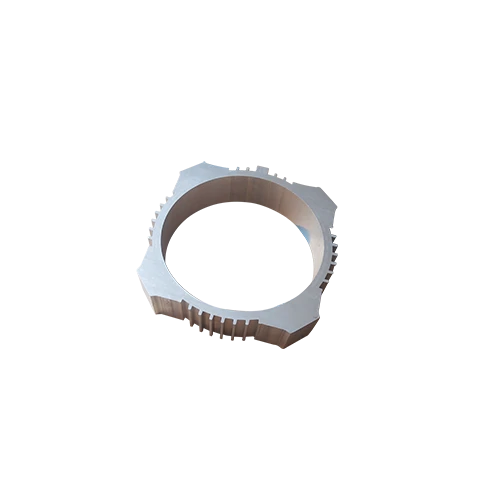Mobile:+86-311-808-126-83
Email:info@ydcastings.com
Comparison of Impellers and Propellers in Fluid Dynamics Applications
Impellers and Propellers An Overview of Their Functions and Applications
In the realm of fluid dynamics, impellers and propellers serve critical roles in the movement and manipulation of fluids, be it in engines, pumps, or various marine applications. While they share similarities in design and a common purpose—to transfer energy to a fluid—impellers and propellers operate under different principles and are used in diverse applications. Understanding their functions, differences, and applications provides insight into their significance in modern technology.
The Basics of Impellers
Impellers are mechanical devices designed to increase the energy of a fluid. Typically found in pumps, they consist of a rotating component that imparts kinetic energy to the fluid, causing it to move from one area to another. The design of an impeller can vary widely, but it usually features blades that are curved or straight, which enhance the efficiency of fluid movement. As the impeller spins, it creates a low-pressure area behind it, drawing fluid into the pump and pushing it out with increased velocity. This mechanism is critically important in many sectors, including water treatment, chemical processing, and heating systems.
Impellers can be classified into several types based on their designs, such as radial, axial, and mixed flow impellers. Radial impellers move fluid outward in a perpendicular direction to the axis of rotation, making them ideal for applications requiring high pressure. Axial impellers, alternatively, push fluid along the axis of rotation, primarily used in applications needing large flow rates at lower pressures. Mixed-flow impellers combine both radial and axial flow principles, providing a balance between pressure and flow rate.
The Role of Propellers
impeller and propeller

Propellers, on the other hand, are primarily associated with marine applications and aerodynamics. They consist of rotating blades angled to create thrust by pushing against water or air. The motion of the blades generates lift, causing the vessel or aircraft to move forward. This thrust is the result of Newton’s third law of motion for every action, there is an equal and opposite reaction. As the propeller blades spin, they displace fluid (water or air) backward, which in turn propels the boat or aircraft forward.
The design of a propeller usually features a hub at the center with blades extending outward. The shape, pitch, and number of blades can significantly influence the performance of a propeller. For example, a propeller with a higher pitch moves more fluid per revolution than one with a lower pitch, but it may require more power to operate efficiently. Understanding these characteristics allows engineers and designers to optimize propeller performance for specific applications, whether in shipping, aviation, or even in small-scale devices like drones.
Key Differences and Applications
While both impellers and propellers transfer energy to fluids and share basic operational principles, their applications differ significantly. Impellers are predominantly used in enclosed systems, contributing to various industrial processes like pumping and mixing. They are essential in applications like HVAC systems, chemical reactors, and wastewater treatment facilities, where precise control of fluid movement is required.
Conversely, propellers are predominantly used in open systems where the fluid is free to move away from the source. They are vital in marine vessels, aircraft propulsion systems, and wind turbines. Their design and efficiency significantly influence the overall performance of the vehicle or system they are integrated into.
In conclusion, both impellers and propellers are indispensable components in fluid dynamics, enabling the efficient movement of fluids in various systems. Recognizing their differences and applications aids in understanding their roles in technology and industry. Whether facilitating water movement in pumps or propelling an aircraft through the sky, these devices exemplify the innovative engineering solutions that drive modern civilization. As industries continue to evolve, the importance of impellers and propellers will undoubtedly persist, further enhancing the way we interact with fluid systems.
-
Why Should You Invest in Superior Pump Castings for Your Equipment?NewsJun.09,2025
-
Unlock Performance Potential with Stainless Impellers and Aluminum End CapsNewsJun.09,2025
-
Revolutionize Your Machinery with Superior Cast Iron and Aluminum ComponentsNewsJun.09,2025
-
Revolutionize Fluid Dynamics with Premium Pump ComponentsNewsJun.09,2025
-
Optimizing Industrial Systems with Essential Valve ComponentsNewsJun.09,2025
-
Elevate Grid Efficiency with High-Precision Power CastingsNewsJun.09,2025











